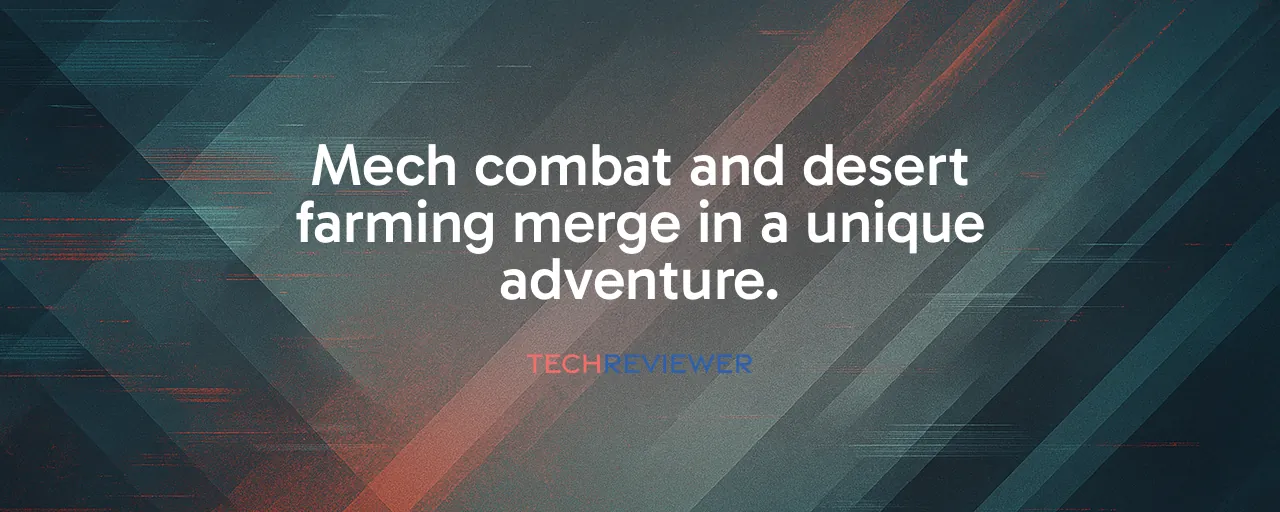A New Breed of Adventure
When DINOGOD launched Bounty Star on October 23, 2025, it caught everyone's attention with a daring mix of genres. Piloting a customizable mech through a sun-scorched desert, blasting rogue robots, then heading home to water your crops and tend to livestock defines the experience. Set in the Red Expanse, a post-apocalyptic take on the American Southwest, the game follows Clementine McKinney, a war veteran balancing bounty hunting with building a quiet life. It's a bold experiment that pays off, blending high-octane combat with the calm rhythm of farming, all wrapped in a story about finding peace after trauma.
What makes Bounty Star stand out is how it speaks to different kinds of players. Fans of Armored Core will love tinkering with the Desert Raptor MKII mech, swapping out hydraulic siege weapons or dash boosters for tactical edge. Meanwhile, those who unwind with Stardew Valley will find comfort in planting crops and managing resources like water, which ties directly into fueling mechs and expanding your homestead. This fusion, backed by Annapurna Interactive's knack for bold indie projects, launched day-one on Xbox Game Pass for PC and Xbox Series X|S while also releasing on PlayStation 5, Steam, and Epic Games Store.
Balancing Chaos and Calm
The magic of Bounty Star lies in its balance. DINOGOD, a small Phoenix, Arizona studio, didn't just slap two genres together. They crafted a loop where combat and farming feed into each other. Every bounty mission, whether you're dodging enemy attacks or chaining melee strikes with a gun-cancel maneuver, earns resources to upgrade your homestead. Those crops and livestock, in turn, produce fuel and ammo for your mech. It's a clever system that makes every action feel meaningful, whether you're battling beasts or managing irrigation in a desert where water is everything.
This balance wasn't easy to pull off. Early previews noted occasional frame drops during intense fights, a reminder of the small team's resource constraints compared to AAA giants. Yet, reviews from IGN and GameGrin, averaging scores around 8 out of 10, praised the game's art direction, with its vibrant orange cliffs and Wild West aesthetic. The narrative, centered on Clementine's redemption, adds emotional weight, making every mission feel like part of a larger journey. For players burned out on repetitive extraction shooters, this blend of intensity and tranquility feels like a breath of fresh air.
Lessons From Genre Pioneers
To understand Bounty Star's success, look at Rune Factory, a series that's thrived since 2006 by mixing farming with action RPG combat. Its seamless integration of monster-slaying and crop-tending created a loyal fanbase, proving players crave variety. Rune Factory taught developers to ensure both gameplay loops feel equally polished, a lesson DINOGOD applied by giving Bounty Star's combat and farming equal depth. Optional mission objectives let players tweak difficulty, catering to both hardcore mech pilots and casual farmers, much like Rune Factory balances dungeon-crawling with cozy life sim elements.
Contrast this with No Man's Sky, which stumbled at launch in 2016 by promising a vast universe but delivering repetitive exploration. Its redemption came through years of updates, adding base-building and deeper mechanics that aligned with player expectations. Bounty Star avoids this pitfall by launching with a focused vision, though its niche appeal risks missing a broad audience without Game Pass's reach. These case studies show that genre hybrids succeed when they respect player time and deliver cohesive experiences, a standard Bounty Star meets with its tight design.
Why It Matters for Gaming's Future
The cozy gaming market, valued at $973 million in 2024 and projected to hit $1.473 billion by 2032, shows players crave games that mix relaxation with engagement. Bounty Star taps into this, offering low-stress farming alongside challenging combat, appealing to the 68 percent of gamers who play to unwind. Its day one Game Pass launch shows how subscription platforms help indie studios like DINOGOD compete with blockbusters like The Outer Worlds 2. Microsoft's upfront payments give small teams financial stability, letting them take risks that spark innovation.
Still, challenges remain. The game's complex mech controls, like the gun-cancel system, might intimidate players used to simpler action titles. Its Western post-apocalyptic vibe, while striking, may not resonate with everyone. Bounty Star proves indie developers can push boundaries, blending genres to create something fresh. If it finds its audience through streamers and word-of-mouth, it could inspire more studios to experiment, showing that even in a crowded market, there's room for bold ideas to shine.
